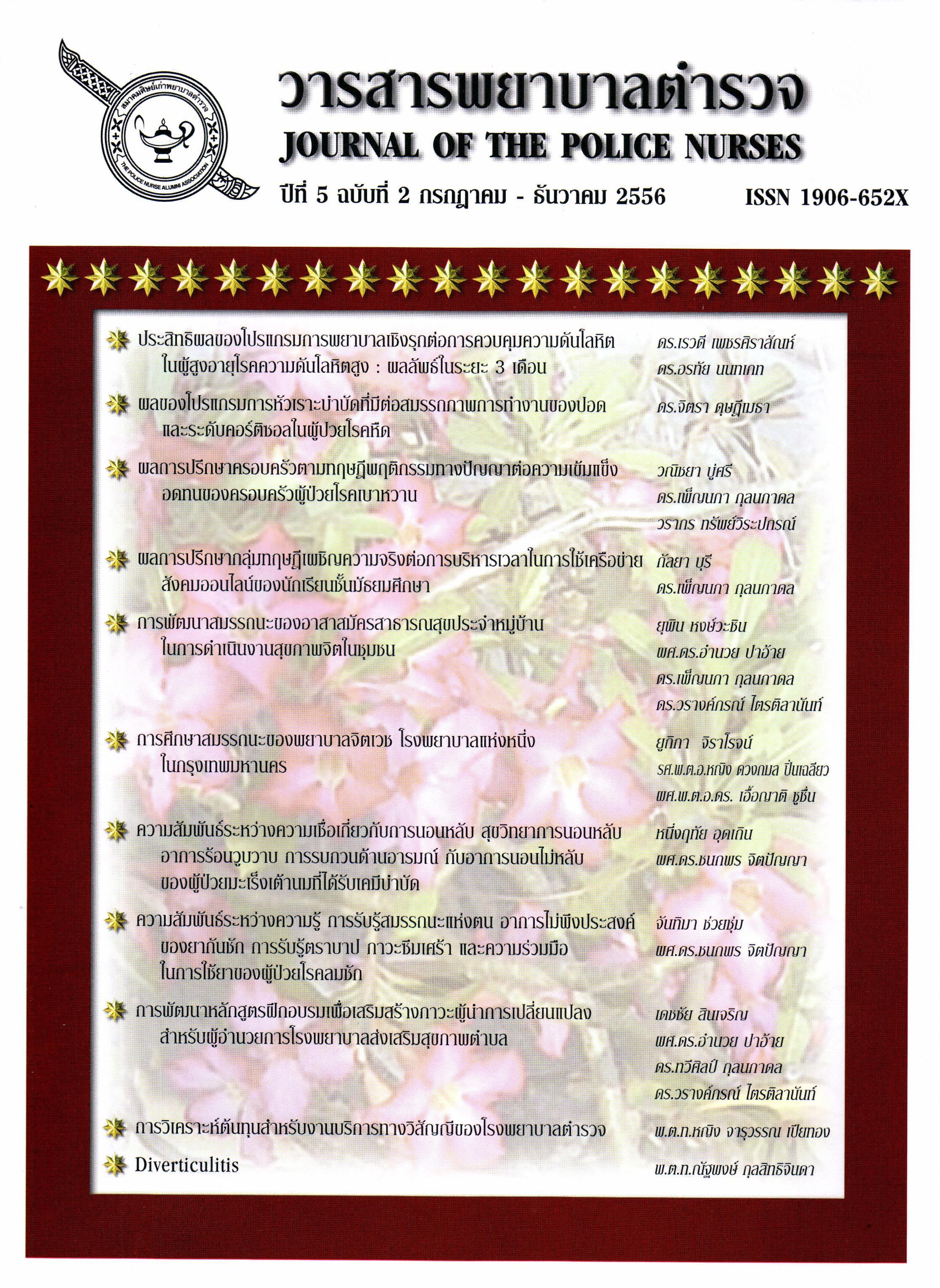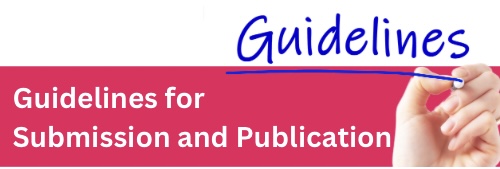ความสัมพันธ์ระหว่างความรู้ การรับรู้สมรรถนะแห่งตน อาการไม่พึงประสงค์ของยากันชัก การรับรู้ตราบาป ภาวะซึมเศร้า และความร่วมมือในการใช้ยาของผู้ป่วยโรคลมชัก
Keywords:
คำสำคัญ, โรคลมชัก, ความร่วมมือในการใช้ยา, การรับรู้ตราบาป, อาการไม่พึงประสงค์จากการใช้ยา, epilepsy, medication adherence, stigma, adverse drug reactionsAbstract
บทคัดย่อ
การวิจัยครั้งนี้มีวัตถุประสงค์เพื่อศึกษาความร่วมมือในการใช้ยาและปัจจัยที่สัมพันธ์กับความร่วมมือในการใช้ยาของผู้ป่วยโรคลมชัก ได้แก่ ความรู้ การรับรู้สมรรถนะแห่งตน อาการไม่พึงประสงค์จากการใช้ยา การรับรู้ตราบาป และภาวะซึมเศร้า กลุ่มตัวอย่าง คือ ผู้ป่วยโรคลมชักที่ได้รับการรักษาด้วยการใช้ยากันชักที่มารับบริการที่แผนกผู้ป่วยนอกคลินิกโรคลมชักของโรงพยาบาลศูนย์ตรังและโรงพยาบาลหาดใหญ่ จำนวน 115 คน ที่ได้รับการสุ่มแบบเจาะจง เครื่องมือที่ใช้ในการวิจัย คือ แบบประเมินข้อมูลส่วนบุคคล แบบประเมินความรู้ แบบประเมินการรับรู้สมรรถนะแห่งตน แบบประเมินอาการไม่พึงประสงค์จากการใช้ยา แบบประเมินการรับรู้ตราบาป แบบประเมินภาวะซึมเศร้า และแบบประเมินความร่วมมือในการใช้ยา ที่ผ่านการตรวจสอบความตรงตามเนื้อหาโดยผู้ทรงคุณวุฒิ วิเคราะห์ค่าความเที่ยงด้วยวิธีของคูเดอร์-ริชาร์ดสัน ได้ค่าความเที่ยงเท่ากับ .91 และหาค่าความเที่ยงด้วยการหาค่าสัมประสิทธิ์แอลฟ่าของครอนบาคได้เท่ากับ .84, .70, .89, .74, และ .71 ตามลำดับ วิเคราะห์ข้อมูลโดยใช้ค่าความถี่ ร้อยละ ค่าเฉลี่ย ส่วนเบี่ยงเบนมาตรฐาน และค่าสัมประสิทธิ์สหสัมพันธ์แบบเพียร์สัน ผลการวิจัยสรุปได้ดังนี้
1. ร้อยละ 53.04 ของผู้ป่วยโรคลมชักมีความร่วมมือในการใช้ยาในระดับต่ำ(=4.42, SD= .88)
2. ความรู้เกี่ยวกับโรคลมชักและการรักษา (rxy= .876) และการรับรู้สมรรถนะแห่งตน (rxy= .820) มีความสัมพันธ์ทางบวกกับความร่วมมือในการใช้ยาของผู้ป่วยโรคลมชักอย่างมีนัยสำคัญทางสถิติที่ระดับ .05
3. อาการไม่พึงประสงค์จากการใช้ยา (rxy= -.662) การรับรู้ตราบาป (rxy= -.591) และภาวะซึมเศร้า (rxy= -.646) มีความสัมพันธ์ทางลบกับความร่วมมือในการใช้ยาอย่างมีนัยสำคัญทางสถิติที่ระดับ .05
คำสำคัญ : โรคลมชัก; ความร่วมมือในการใช้ยา; การรับรู้ตราบาป; อาการไม่พึงประสงค์จากการใช้ยา
Relationships among Knowledge, Self Efficacy, Adverse Drug Reactions, Stigma, Depression and Medication Adherence in Patients with Epilepsy
Abstract
The purposes of this descriptive study were to study medication adherence and factors related to medication adherence in patients with epilepsy including knowledge, self-efficacy, adverse drug reactions, stigma, and depression. The sample consisted of 115 patients with epilepsy who attended at epileptic clinic in Trang hospital and Hatyai hospital, and were selected by purposive sampling. The instruments were questionnaires regarding demographic, knowledge scale, self-efficacy scale, adverse drug reaction scale, stigma scale, depression scale, and medication adherence scale. All questionnaires were tested for content validity and reliability with Kuder-Richardson, which was .83, and Cronbach, s Alpha Coefficients, which were .88, .73, .86, .81, and .78 respectively. The using statistical methods of frequency, percentage, mean, standard deviation, and Pearson, s Product Moment correlation. The major findings were as followed:
1. Most of the patients (53.04%) showed low medication adherence (= 4.42, SD = .88)
2. Knowledge (rxy=.876) and self-efficacy (rxy=.820) were positively significant related to medication adherence at the level of .05
3. Adverse drug reaction (rxy= -.662) stigma (rxy= -.591) and depression (rxy= -.646) were negatively significant related to medication adherence at the level of .05
Keywords: epilepsy; medication adherence; stigma; adverse drug reactions
Downloads
Downloads
How to Cite
Issue
Section
License
ผลงานที่ได้ตีพิมพ์แล้วจะเป็นลิขสิทธิ์ของวารสารพยาบาลตำรวจ















